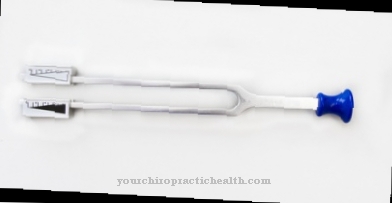A Rollator is a walker. It acts as a mobile support and helps people with limited mobility to move around safely. With a rollator, people with reduced mobility become mobile again.
What is a rollator?

In 1978, the walker known today as the rollator was developed by the Swede Aina Wifalk. She herself suffered from polio and the resulting walking difficulties. Thanks to the rollator, she was able to move more freely and without additional supports.
The idea was picked up by a Swedish company and due to its practical use, rollators were soon patented and widely used. Initially, these walking aids were made from sturdy metal tubing. They consist of four wheels at the lower end of the frame. Above the frame, the tubes end in two handles that provide appropriate support. Further accessories have been developed, such as transport baskets, brakes, seats, holders for walking sticks or forearm rests.
First of all, a basic model was created that could be used universally. In the further course of the production of rollators, various models were developed that enabled a specific use and purpose.
Shapes, types & types
The basic model of the rollator is made of sturdy metal tubes, has an almost square base with four wheels and two upwardly extending rods that lead into two sturdy handles. Various models for different loads and usage zones were created from this basic version.
For example, particularly light and narrow rollators are made of wood, which are particularly suitable for indoor use. Furthermore, frame-reinforced constructions with larger wheels and corresponding additional equipment and bags, which are very suitable for off-road use.
Brakes were attached below the handles to prevent the rollator from slipping. The rollators were also designed in the further development so that they can be conveniently folded up and transported in a car. In addition, particularly light models made of aluminum tubing came onto the market, which can be lifted more easily and carried over obstacles.
As an alternative to the classic rollator with four wheels and the basic shape of a square, walking wheels with a basic triangular shape have been developed. These so-called delta walking wheels with only three wheels have the advantage of being more agile. The disadvantage compared to the four-wheeled rollator is the lower stability.
Structure & functionality
The structure of a rollator follows the principle of a shopping cart. Only the rolling walking aid is much more stable and resilient. The square basic structure rests on four wheels, which are the same size depending on the use or have two larger wheels in the stand area.
The wheels are stable rubber wheels, as can also be found on transport trolleys. In the case of all-terrain models, the wheels of the rollator are also reinforced with knobs. Newer models have enlarged wheels to enable even better locomotion.
The rear frame ends in two handles that tap upwards and are adjustable in height. Below the handles there are two brakes attached to the rear wheels. This prevents the rollator from rolling away during use.
Often the two tubes that lead to the handles have a connection that is widened in the middle to about 20 cm. This area can be used as a seat. Elderly people with walking difficulties in particular are quickly exhausted when they are out and about with the rollator for some time. The seat on the rollator is a good way to relax. When using the seat, however, care must be taken to apply the brakes so that the rollator cannot roll away.
To move about, the person leans on the two handles of the rollator and can therefore move forward more easily. The handles also serve as controls.
A rollator is much more effective than a walking stick, as it supports both arms and the rolling of the wheels makes locomotion easier. If the handicapped person also needs a walking stick, there are corresponding holding devices for the rollator into which the walking stick can be inserted or clamped.
Often people do their entire daily routine with their rollators. It is therefore very practical if the rollator is equipped with a transport basket in front of the handles. This basket can be used to carry your handbag or your day's shopping.
Since many users of rollators have an unsafe stance, it is very relieving that the rolling walker does not have to be lifted. However, stairs can only be mastered to a limited extent. The rollator is more suitable for flat surfaces. Road edges, on the other hand, can be tackled well.
A practical tray or cup holder can be attached as additional accessories.
You can find your medication here
➔ Medicines for balance disorders and dizzinessMedical & health benefits
A rollator has a considerable medical benefit for the user, since it significantly increases the mobility and mobility of a disabled person. Many people would no longer be able to go about their daily activities without their rollators and would therefore lose a great deal of quality of life.
The rolling walking aids enable weak, elderly and disabled people to move around outside with appropriate safety. This means of transport largely preserves people's independence. The rollator is an instrument that enables you to move relatively freely, regardless of outside help. So the user can still actively participate in public life.

























.jpg)


